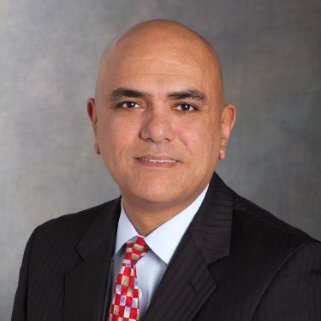Interview with Vipin Ramani: The Future of Credit Risk Published November 16, 2019

Risk management is at the core of banking, but what does the rise of big data do to the practice of credit risk management of lenders? At Tax Guard, we believe that complete federal tax information about business practices, behaviors, and activities add color to the picture of the best lending bets. That’s why we invented proprietary processes to analyze data that deliver an improved view of business borrower profiles.
But what do top bankers see and believe?
To answer that question, we interviewed financial big data guru, Vipin Ramani, who has had a storied career spanning across industries. Most recently, Vipin was the Chief Risk Officer – Data & AI Risk Management, at Bank of America. We asked Vipin how he got into risk management and what trends he’s seeing that affect the future of lending.
How did you get into risk management and why?
I first came to this country in 1992 to study at Georgia Tech under Dr. George Vachtsevanos. He was a pioneer in artificial intelligence (AI). Back in the day, it was considered “black” magic. In fact, quite a few professors tried to dissuade me from studying AI, but I wanted to be in the business of finding practical answers to real-world problems, without being tied up in the world of academic theory. So I pursued this path and never looked back.
Prior to risk management applications, I was a part of several practical implementations of AI. I’ve been involved with everything from drones, driverless cars, textile looms, washing machines, elevators, turbines, aircraft engines, strategic defense initiatives and more. One of my favorite/applications was developing a “smart” washing machine capability to set the machine timer by analyzing the load. I led the team to implement the solution and rolled it out into production. Another example, though this one is unfinished is to analyze the EKG/EEG signals and to be able to predict tumor formation.
It’s been very exciting to be part of this journey as we now live in a world where we have data science and AI for many of our modern innovations.
In 2002, I moved into risk management when I joined Bank of America at a time when the financial industry was going through a minor credit cycle. I was asked to institute a process framework around financial decision-making for investment banking from a risk management perspective using my Master Black Belt (MBB) in Six Sigma. As I studied the intricacies of risk management, I got very excited about the work and was given increasing opportunities in risk management – credit, market, liquidity and operational risk management.
How has the world of credit risk management changed since 2002?
Credit risk management, in its simplest form, has not changed much – lenders must balance risk/reward and understand their credit exposure. The only things that have changed are:
- Products have become a bit more complex
- Regulatory oversight has increased
- Interdependency of other risk factors has increased (operational risk, cybersecurity, data risk, etc.)
What key trends are shaping the future of credit risk?
There are two main shifts happening in the financial services industry:
- Data analytics & digitization: There’s a significant amount of data available today. Companies that evolve and harness computing power to make faster decisions and better understand the credit risks will out-compete others. They will be able to be more targeted in selecting their clients, improving pricing, efficiently servicing clients and effectively managing portfolios.
- Shifting competitive landscape: Fintech companies are increasingly competing on the basis of efficiency—providing better customer service, faster decision making, and reduced costs. These fintech companies are not (yet) encumbered by the credit cycles. They grew out of the post-2008 recession and have yet to be tested by a downturn. And we don’t know how long can they last with an untested underwriting model. Also, given their infancy and smaller size, the regulators are not actively supervising their processes. So, these newer competitors are able to disrupt the industry.
Are we moving towards full automation in the lending process?
Absolutely! 100% automation should be the goal. Significant portions of the process are already automated. In the very short term (2-3 years) there might be instances where human intervention might be required but as processes are stood up for lenders across the spectrum, 100% automation can be achieved.
A couple of caveats, data is never perfect and will always require oversight; and client relationships will always remain critical – unless of course there are robots on the other end as well.
What are the largest challenges facing commercial lenders today?
The biggest challenges facing commercial lenders are:
- Being able to use technology to efficiently make better decisions than anyone else;
- Cybersecurity risks which create disruption to lenders and clients;
- Increasing cost of regulations;
- Increasing use of credit/underwriting models; and
- Competition from non-traditional lenders.
What role do you see tax business intelligence playing in credit risk management?
Tax data is critical in better managing credit risk.
It is key “factual” information and the most accurate official representation of the client.
Tax data can provide insight into the health of an entity. As entities become more complex, it is becoming increasingly difficult to manage, track and monitor these entities and interdependencies that might exist. Tax data is essential to monitor the flow of funds and the health of the various entities and determining if there is any fraudulent activity taking place.
In my experience, there have been instances where credit was extended to a client and it did not perform well; If we had used tax data to know the full extent of their interdependent business network we probably would not have extended the credit and avoided the losses.
To learn more about how tax data can be used to improve your credit risk management, identify fraud, and make more confident decisions please schedule your customized demo today.
